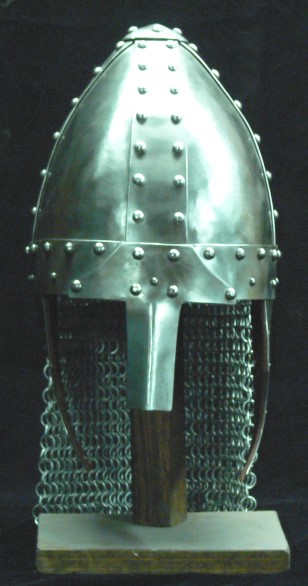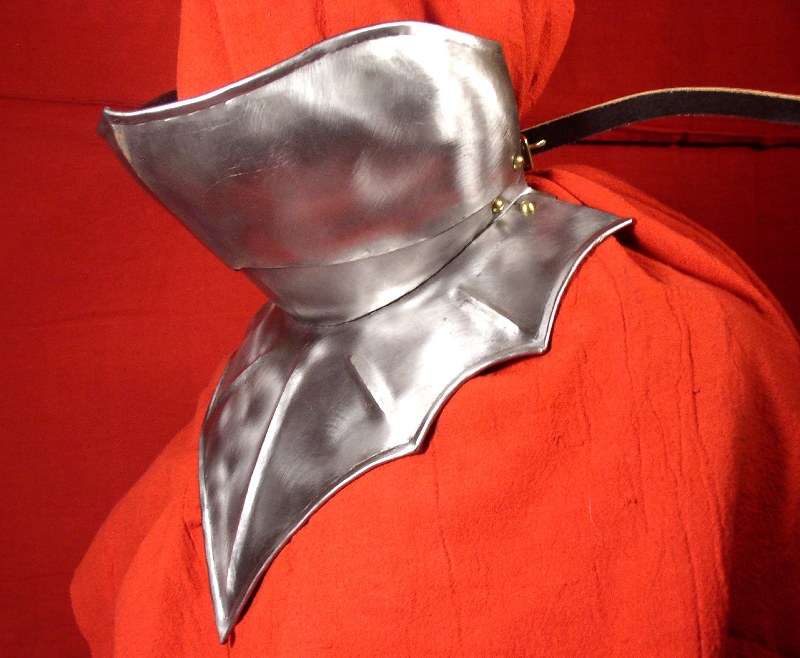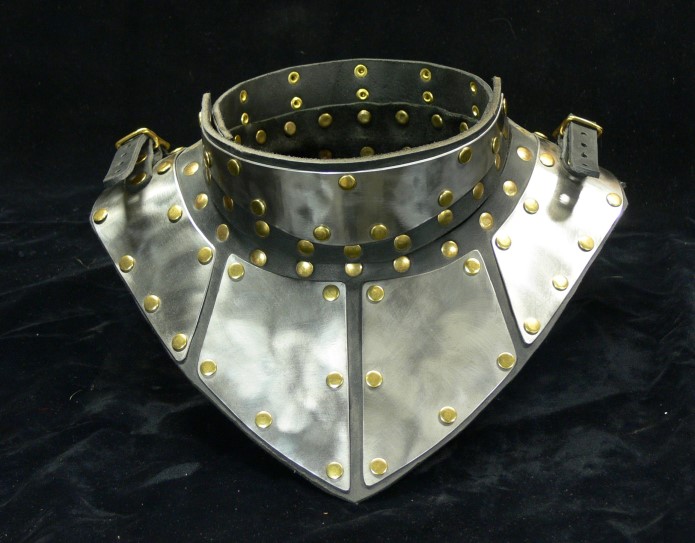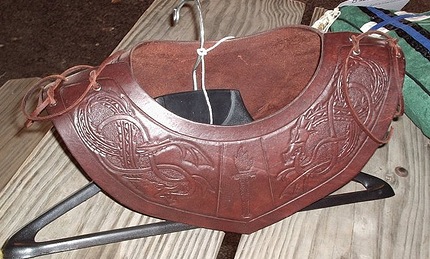Neck Armor
Aventail
An aventail or camail is a flexible curtain of chainmail on a helmet, that extends to cover the neck and shoulders. The mail could be removed for cleaning or storage, and attached to the helm through use of a leather cord that was threaded through brass rings at the edge of the helm. Aventails were most commonly seen on bascinets in the 14th century and served as a replacement for a chainmail coif. Some aventails were decorated with edging in brass or bronze links, or dagged edges. By the late 15th century, the Aventail had replaced the chainmail coif completely. Only those who were poor or who were collectors of the sort had a chainmail coif. Aventails were typically attached to the helmet via small staples known as vervelles.
Bevor
A bevor is a piece of plate armour designed to protect the neck, much like a gorget. A bevor can be made of a single solid piece or multiple articulated lamés around the neck and chin. The bevor was typically worn in conjunction with a sallet, and later with a burgonet, in a form known as a falling buffe. In both cases the two pieces of armour combined to provide protection for the whole of the head and neck.
Gorget
A gorget originally was a steel collar designed to protect the throat. It was a feature of older types of armour and intended to protect against swords and other non-projectile weapons. Later, particularly from the 18th century onwards, the gorget became primarily ornamental, serving only as a symbolic accessory on military uniforms.
Most Medieval versions of gorgets were simple neck protectors that were worn under the breastplate and backplate set. These neck plates supported the weight of the armour worn over it, and many were equipped with straps for attaching the heavier armour plates. Later, Renaissance gorgets were not worn with a breastplate but instead were worn over the clothing. Most gorgets of this period were beautifully etched, gilt, engraved, chased, embossed, or enamelled and probably very expensive. Gorgets were the last form of armour worn on the battlefield.
During the 18th and early 19th centuries, crescent-shaped gorgets of silver or silver gilt were worn by officers in most European armies, both as a badge of rank and an indication that they were on duty. These last survivals of armour were much smaller (usually about three to four inches in width) than their Medieval predecessors and were suspended by chains or ribbons. In the British service they carried the Royal coat of arms until 1796 and thereafter the Royal cypher.



